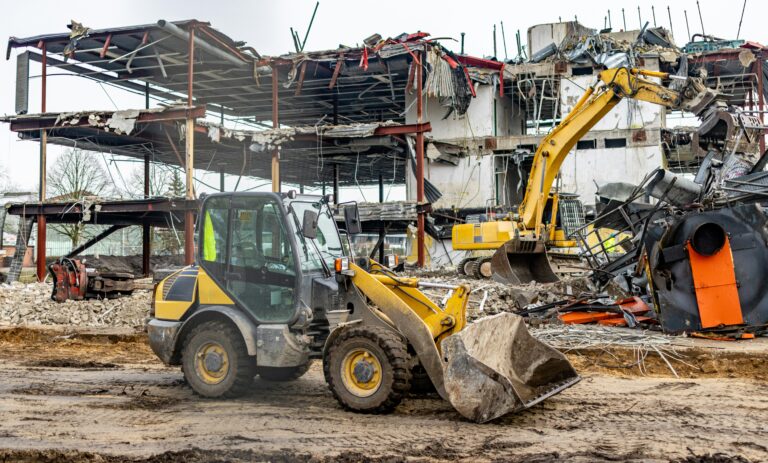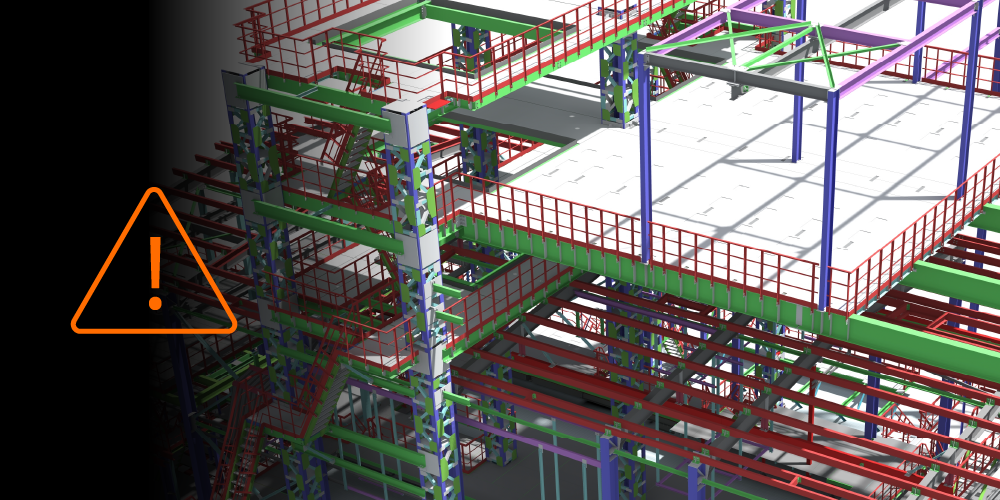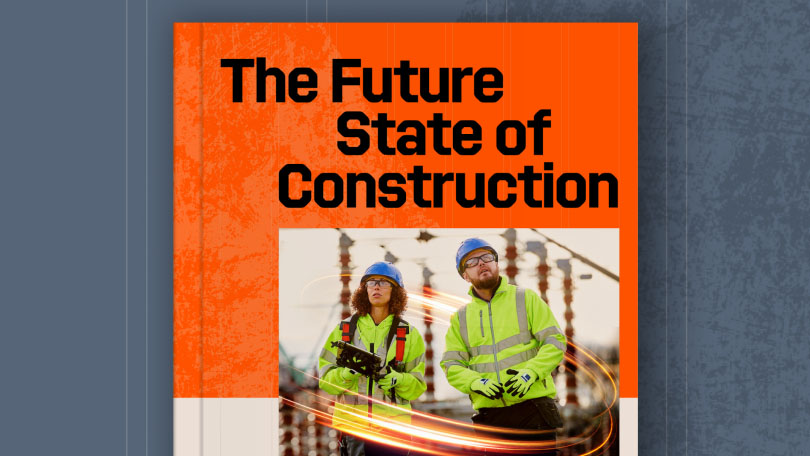Related Articles
— 7 min read
Design Once, Use Twice: Better Documentation for Circular Construction

Last Updated Sep 10, 2025

Willow Aliento
Principal
As a qualified environmental scientist and accredited journalist, Willow works across the property, design, engineering and construction sectors to advance sustainable practices. Her areas of expertise and experience include construction quality and compliance, carbon footprints, sustainable procurement, climate risk and resilience, environmental policy, social value, stakeholder engagement and Indigenous consultation. Her communications work has appeared in publications including The Guardian, The Fifth Estate, Ecolibrium, Sourceable, Australian National Construction Review and InDesign.
Last Updated Sep 10, 2025

Construction consumes massive volumes of raw materials and resources. According to the Green Building Council of Australia, nearly 50% of all the world’s resource use is in some way associated with the built environment. Despite growing awareness, only a fraction of those resources are recovered or reused.
In fact, the CSIRO estimates Australia’s “circularity rate” — the proportion of resources reused or recycled into new products — sits at just under 5%. This leaves the sector highly exposed to material scarcity, price volatility, and environmental pressures.
This is not sustainable because non-renewable resources, including iron ore and construction sand will become scarce, leading to major supply chain issues and material cost increases. The energy and water consumed in creating new products and materials is also problematic, and overall, the manufacture and consumption of products in the built environment also generates 37% of all global greenhouse gas emissions.
But there is another way.
Circular economy principles are gaining traction across government, finance, and industry. These principles are reshaping how we approach the built environment — from design and procurement through to operations, deconstruction, and reuse.
Table of contents
The Opportunity: Circular Economy in Action
At its core, a circular economy aims to reduce reliance on virgin materials, extend the life of products, and keep resources circulating in high-value uses. For construction, this means shifting from a "take, make, waste" approach to one that prioritises designing for reuse, preserving embodied carbon, and eliminating waste at every stage.
Let’s explore how this shift plays out in practice — and how construction professionals can plan, document, and collaborate to support it.
1. Existing Buildings as Material Banks
On brownfield sites, demolition has traditionally been the default first step. But developers and design teams are increasingly viewing existing buildings as material banks — sources of structural components, fit-out elements, and surplus materials that can be reused or reallocated.
This often begins with surveys by a structural engineer that might be undertaken to establish which parts of the structure can be retained and refurbished to meet current code specifications or the new project design requirements. In some cases, legacy HVAC systems, finishes, or cabling can be preserved or redeployed. Leftover materials may be passed on to other projects, suppliers, or second-hand markets.
To achieve this, either a specialist consultant or a member of the developer or contractor team will need to put some time into research and engaging with potential recipients.
The time factor is important in this approach. Re-use, refurbishment and redeployment of materials and products will generally take longer than conventional demolition.
The time cost may be partly balanced however by:
- Savings on landfill charges,
- Savings on new materials procurement,
- Time savings in the development approval stage, as projects retaining existing buildings may encounter less resistance than projects that start with demolition.
Pro Tip
Capture reuse opportunities early through coordinated site surveys and ensure findings are documented clearly in updated plans and specifications. This documentation supports compliance, enables informed procurement decisions, and helps align all stakeholders on what's being retained, reused, or reallocated.
2. Design for Circularity
Circular design doesn’t mean compromising on performance or aesthetics. Instead, it means planning for adaptability, disassembly, and reuse — from day one.
A recent report by Arup and the Ellen McArthur Foundation, Unlocking value in buildings: developing the business case for building circular, shows there are some key practical steps to designing projects for circularity. They include design and specification for assembly and disassembly. For example:
- Connections that are bolted rather than welded
- Specify modular elements that are easier to remove and redeploy
- Choose materials and assemblies that can be repaired or refurbished.
For example, engineered timber and steel floor cassettes are generally easier to reuse than cast-in-place concrete. Similarly, drywall systems designed for deconstruction can reduce waste and accelerate future renovations.
It’s a matter of thinking about end-of-life at the beginning — during design and procurement — to identify where materials and products can be reused, repaired, disassembled, or repurposed in the future. This thinking should be reflected in specifications, procurement documents, and design briefs, with clear documentation to guide downstream decisions.
Pro Tip
Engage contractors and trades early in the design process to test the real-world feasibility of circular choices — especially where disassembly, reuse, or modularity is involved.
3. Procuring with Stewardship in Mind
Manufacturers and suppliers are responding to the growing interest in resource stewardship and circular economy with a range of innovations including products-as-a-service, take-back schemes, extended producer responsibility schemes and disclosure of end-of-life matters.
Products-as-a-Service (PaaS)
In this model, instead of buying outright, developers or facilities managers lease materials or systems from the manufacturer. This creates incentives for suppliers to design for durability, reuse, and easy maintenance.
Carpet tiles were one of the first products widely available for new construction fit-outs, and renewable energy providers were early adopters also, with companies offering solar PV on a leased basis for both commercial and multi-residential buildings.
Recent research from RMIT suggests that more manufacturers will begin to consider the PaaS model as a way of closing the loop with their products, reducing raw material input costs and creating stronger partnerships with their construction industry customers.
Take Back Schemes
Some manufacturers offer programs to recover their products at end-of-life for recycling or remanufacture. This is already common for ceiling panels and plasterboard, and the list is expanding.
Pro Tip
To find out if take back schemes are an option for any materials or products on your project, speak with your suppliers to find out if they are aware of any manufacturers offering take back.
Extended Producer Responsibility
One of the materials that too often goes to landfill during demolition work is telecommunications and data cabling. This is a lightweight material with a massive environmental footprint due to the combination of copper writing and PVC cable sheathing, plus all the various plastics in connectors, plugs, sockets and so forth.
Likewise, monitor screens, LED displays and other products have substantial footprints. These all fall into the category of eWaste, just like laptops and mobile phones, and there is a government-backed scheme for the disposal and recycling of these products and materials.
Extended producer responsibility schemes also apply to refrigerants, which means all legacy HVAC equipment, heat pump units and refrigeration equipment should be consigned to an appropriate recycler who will ensure refrigerants are safely degassed and the metals and other elements of the equipment appropriately recycled.
Pro Tip
You can find out more about extended producer responsibility schemes and product stewardship initiatives, including some of the early adopters, at the Product Stewardship Centre of Excellence
4. Disclosure and Documentation
For builders and trades working on projects with Green Star ambitions, obtaining documentation in the form of Environmental Product Declarations (EPDs), eco-certifications or other environmental impact data is generally standard practice. But even in projects not targeting formal credentials, this documentation can support better decision-making and clearer stakeholder engagement.
Because so many manufacturers and suppliers have created this documentation in order to meet the demand from the green building sector, most credible manufacturers and suppliers will be able to provide some form of relevant information, even when a project is not targeting a formal green credential.
Key data points to look for:
- Percentage of recycled content
- Carbon footprint of production
- Recyclability at end-of-life
Just be aware: not all claims of recyclability reflect real-world options. For instance, plastic films may be technically recyclable, but many councils do not accept them at transfer stations.
It’s also good to keep in mind that circular economy approaches also aim to ensure that if a product is recycled at end of life, the next use is of equal or greater value.
Pro Tip
Check documentation to ensure that claims of recyclability are matched by both an opportunity to send the product for recycling and an end use for the material that is productive and high value.
Closing The Loop
As the adoption of some or all of the key principles of circular economy gathers pace across finance, regulators, manufacturing and asset management, it will become easier to integrate it within a project value chain.
Transitioning to a circular approach requires upfront planning — but it pays off over time. With increasing pressure from regulators, lenders, and clients to demonstrate sustainability, embedding circularity can offer both strategic and commercial benefits.
The key is to embed these considerations into:
- Design briefs and specifications
- Procurement and tender processes
- Construction and handover documentation
- Facilities management workflows
Platforms that enable clear documentation, version control, and collaboration across stakeholders can help teams track materials and decisions throughout the project lifecycle.
Circularity isn’t just about reducing waste — it’s about building smarter, more resilient, and more valuable assets for the long term.
See what’s coming in construction over the next decade.
Download the Future State of Construction Report for insights, trends, and innovations shaping the industry over the next 8–10 years.

Categories:
Written by

Willow Aliento
Principal | Geronimo Advisory
As a qualified environmental scientist and accredited journalist, Willow works across the property, design, engineering and construction sectors to advance sustainable practices. Her areas of expertise and experience include construction quality and compliance, carbon footprints, sustainable procurement, climate risk and resilience, environmental policy, social value, stakeholder engagement and Indigenous consultation. Her communications work has appeared in publications including The Guardian, The Fifth Estate, Ecolibrium, Sourceable, Australian National Construction Review and InDesign.
View profileExplore more helpful resources

Managing Direct Costs in Construction: How Visibility Drives Profitability
Direct costs define the financial reality of every construction project. They cover the labour, materials, and equipment that drive delivery and determine profitability. But even the best-planned budgets can shift...

BIM Clash Detection: Reducing Rework, Delays, and Risk in Construction
Design clashes can be a significant hidden cost in construction, as each conflict between systems risks expensive rework, project delays, and reduced margins. BIM clash detection empowers teams to identify...

Next-Gen Job-Costing: Ready to Move? 5 Things to Consider Before You Get Started
In this three-part series, Quantity Surveyor turned Financial Solutions Specialist Clint Burgess uncovers the real-world gains for people, processes, and profits when businesses move from legacy to next-generation Enterprise Resource...

From Workarounds to Workflow: Solving Construction’s Legacy Job-Costing System Challenges with Next-Gen Tools
In this three-part series, Quantity Surveyor turned Financial Solutions Specialist Clint Burgess uncovers the real-world gains for people, processes, and profits when businesses move from legacy to next-generation Enterprise Resource...
